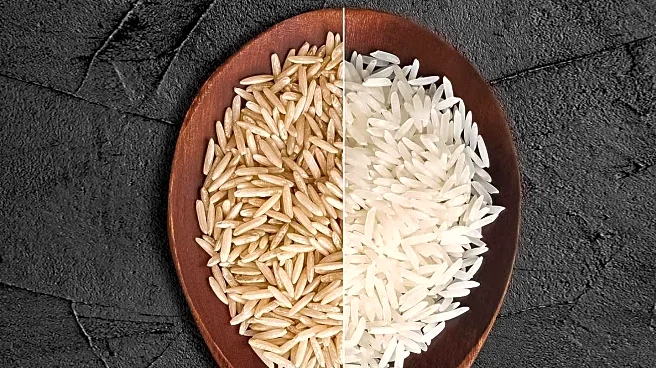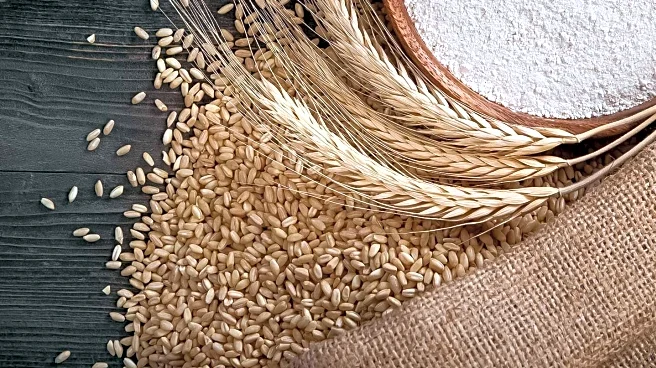What's Happening?
The debate over whether brown rice is healthier than white rice continues to be a topic of interest among nutritionists and consumers. Brown rice is often touted as the healthier option due to its status
as a whole grain, retaining its bran and germ, which are rich in nutrients. White rice, on the other hand, is processed to remove these components, leading to a loss of nutrients. However, white rice is often enriched with vitamins and minerals, making the nutritional differences less significant. Dietitians emphasize that both types of rice have their benefits and drawbacks. Brown rice is higher in fiber and certain nutrients, which can aid in digestion and provide a feeling of fullness. White rice, while lower in fiber, is easier to digest and is a staple in many cultural diets.
Why It's Important?
The choice between brown and white rice has broader implications for dietary habits and cultural practices. Brown rice's higher fiber content can support weight management and cardiovascular health, making it a preferred choice for those seeking to increase their intake of whole grains. However, white rice's role in cultural cuisines highlights the importance of considering dietary choices within the context of cultural traditions and accessibility. The discussion also touches on issues of food accessibility and the perception of certain foods as 'elite' or 'inferior,' which can be influenced by socioeconomic factors. Understanding these dynamics is crucial for making informed dietary choices that align with individual health goals and cultural values.
What's Next?
As consumers become more health-conscious, the demand for whole grains like brown rice may continue to rise. However, the cultural significance of white rice suggests it will remain a staple in many diets. Nutritionists recommend that individuals choose the type of rice that best fits their dietary needs, cultural preferences, and health goals. Ongoing research into the nutritional benefits and potential risks associated with different types of rice will likely continue to inform public health recommendations and consumer choices.
Beyond the Headlines
The discussion around brown versus white rice also highlights broader issues of food justice and accessibility. The perception of brown rice as a healthier, more 'elite' option can reflect underlying socioeconomic disparities in food availability. Additionally, the presence of arsenic in rice, particularly brown rice, has raised concerns about food safety, although studies suggest that the levels found do not pose significant health risks. These factors underscore the complexity of making dietary choices that are both health-conscious and culturally sensitive.











